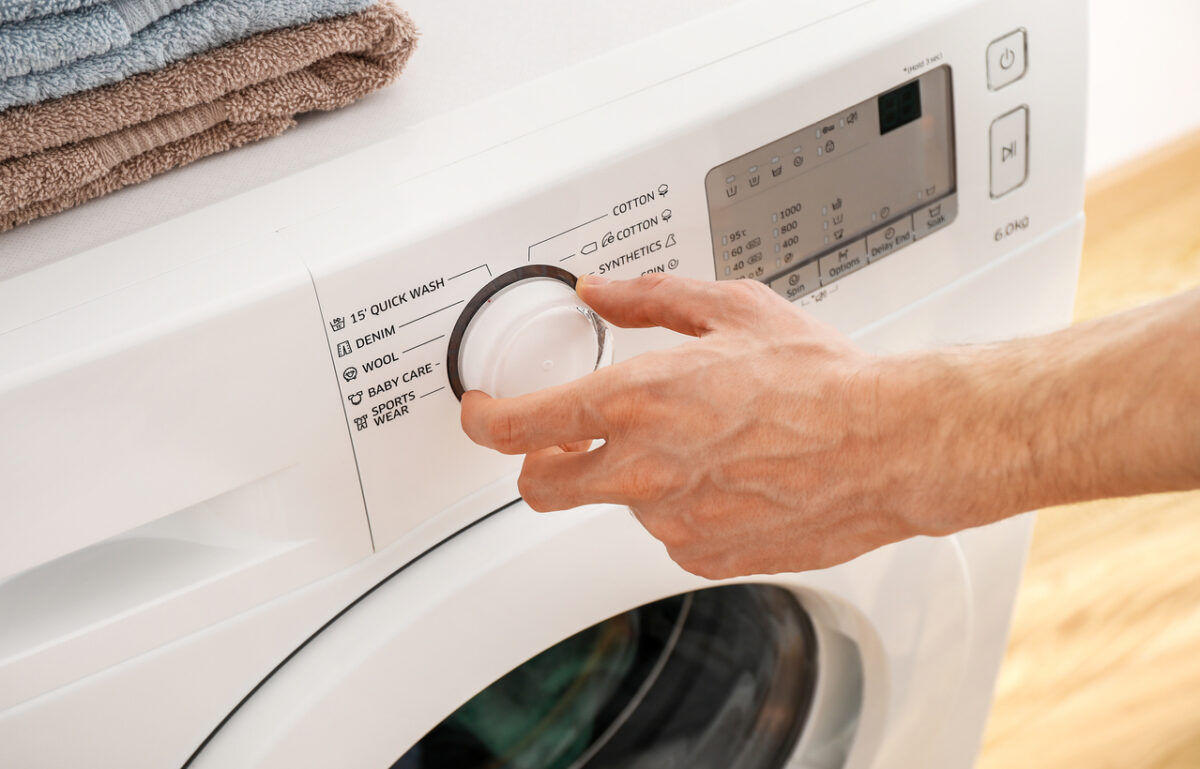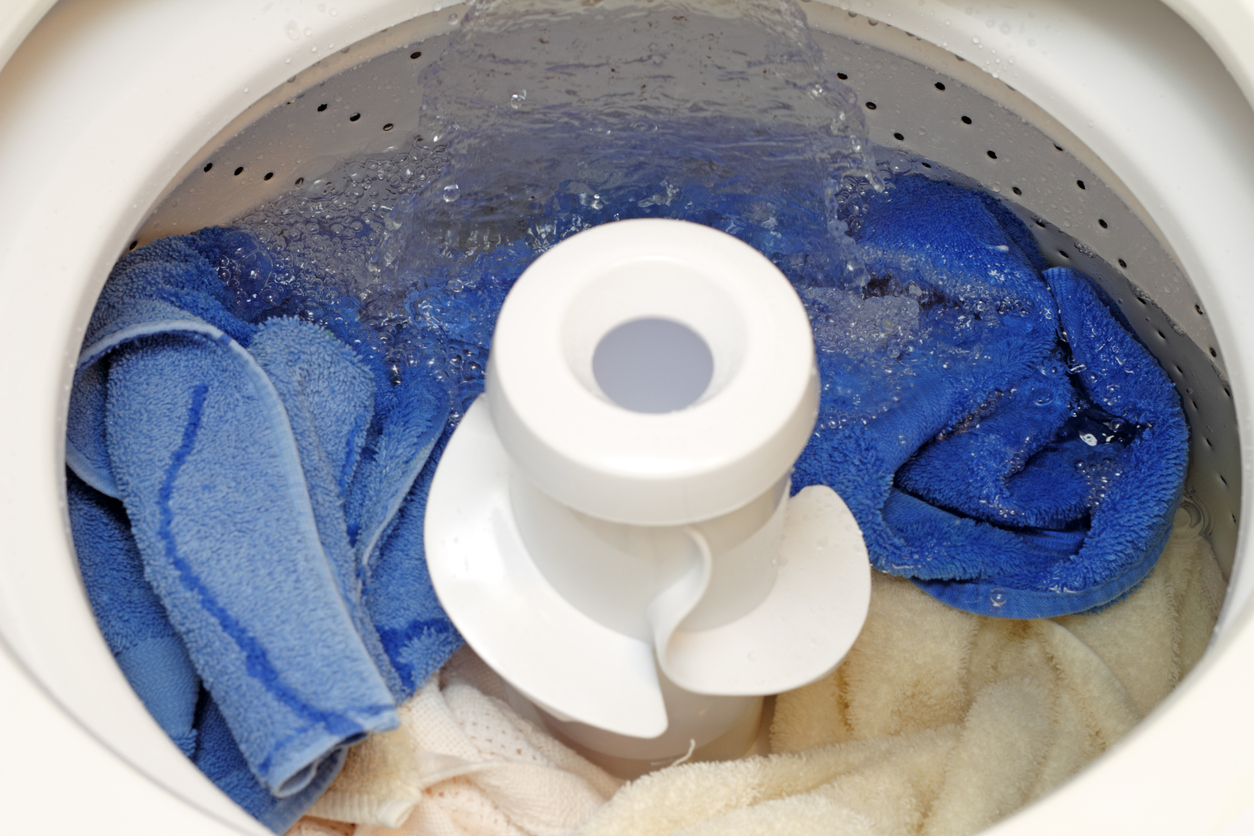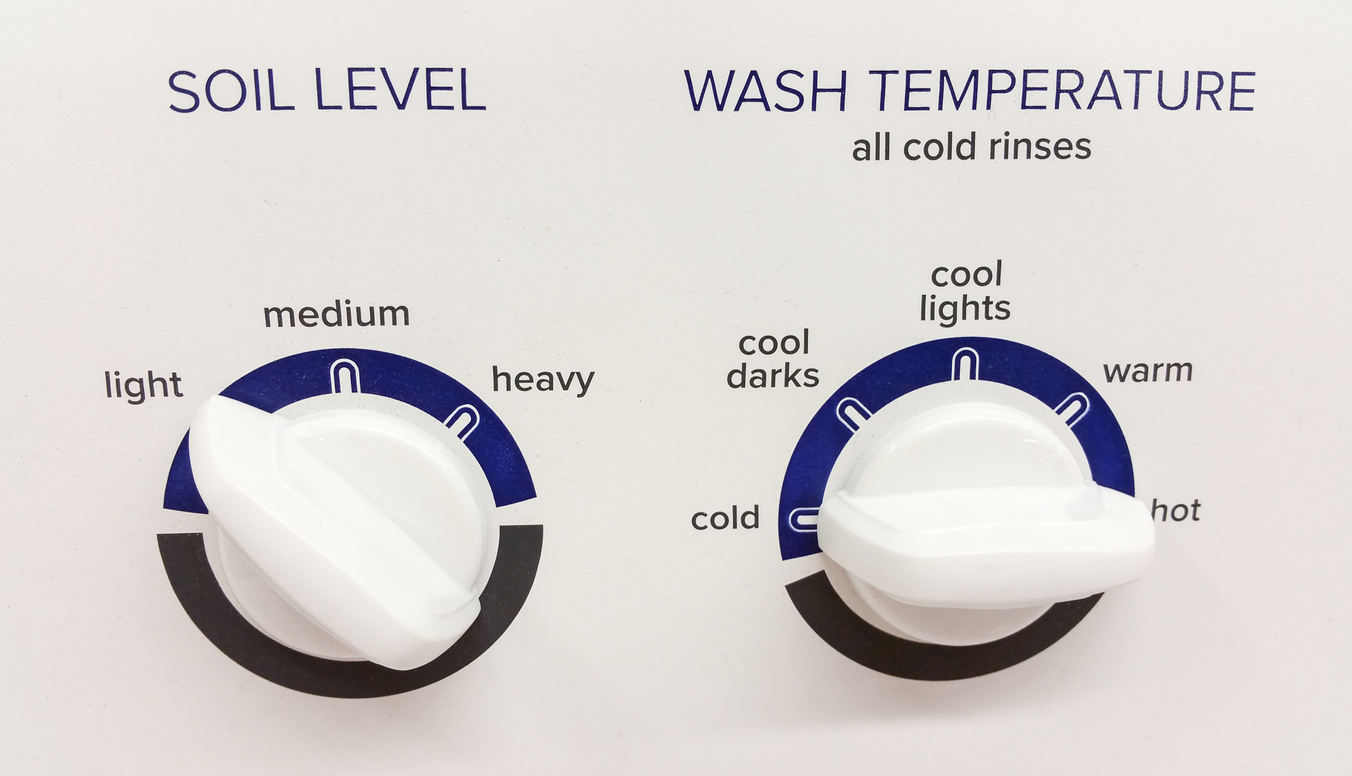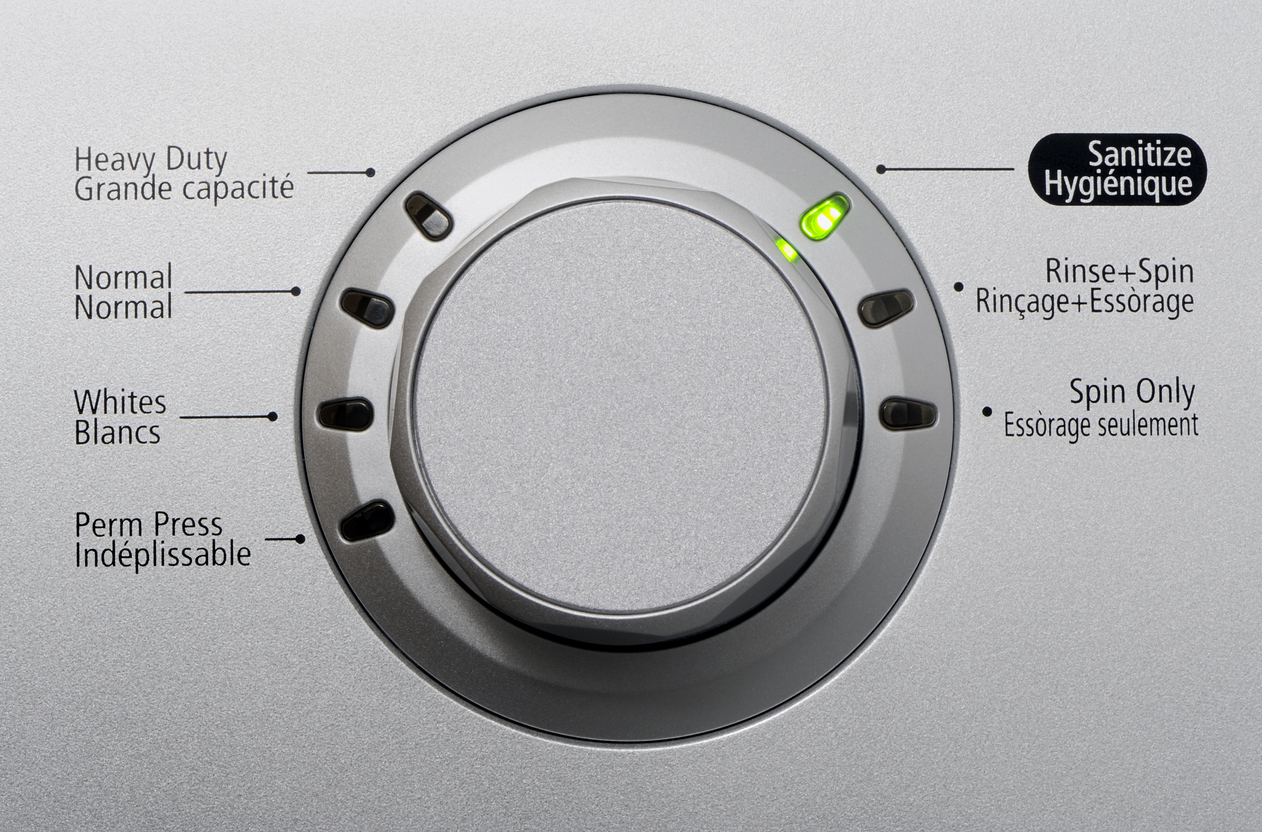

We may earn revenue from the products available on this page and participate in affiliate programs. Learn More ›
Many people don’t fully take advantage of their household appliances’ features. A case in point is the standard workhorse of the household: the washing machine.
Even bargain washers come with multiple settings that tailor washing machine cycles to tackle specific laundry challenges. Still, many use the standard wash cycle for most loads. Choosing the correct washing machine settings, however, can improve the appliance’s overall performance and save on energy, water, and cash.
Admittedly, all of those washing machine settings can be a bit confusing at times. The first place to look to begin demystifying your washer settings is the owner’s manual, so don’t just stick it in a file folder and forget about it. Carefully read the manufacturer instructions to take full advantage of settings specific to your washing machine. Some washing machine settings are common to the majority of washers, so refer to the below guide for common laundry settings and how to realize your washer’s full potential.
Water Level

Most washing machines come with several settings relating to water level, which is tied to the load size. The size of a laundry load depends not just on how many articles are put into the washer, but also the type of laundry being washed. A load of blouses and shirts requires less water than a load of jeans, for instance, and washer settings for towels are different from those used for a delicate wash cycle.
It is important to match the water level to the laundry load to achieve the best results: using too little water may cause clothing to come out dirty and wrinkled; using too much water can decrease your detergent’s effectiveness. High-efficiency (HE) washers detect load size and adjust the water level accordingly, so machines carrying the HE symbol should take care of this step.
Non-HE washing machines need to be set manually for several reasons, the biggest being water usage. According to the Environmental Protection Agency, up to 17 percent of a home’s water is used by the washing machine. In general, a standard top-load washing machine uses approximately 30 to 45 gallons of water per load; an Energy Star-certified washing machine uses an average of about 14 gallons of water per load, although some models may use as little as 7 gallons of water per load.
Small
Although the best time to do laundry is generally when there are enough dirty articles for a full load to minimize energy usage, sometimes a few items need cleaning in a pinch or some delicates that fare better in small loads need laundering. A good rule of thumb is to use the “small” water level setting if the washer tub is only one-third full or less. This will use about a third less water than a large load, but the total gallons will depend on washer type.
A top-load washer that uses 30 gallons for a full load will use about 10 gallons for a small load. An Energy Star washer that uses 14 gallons for a full load will take about 4.6 gallons to complete a small load.
Medium
Determining a medium load is easy: When the washing machine is anywhere from one-third to three-quarters full, the medium setting works best. This load level will use about half the water of a full load; the total gallons depend on washer type.
A top-load washer that uses 30 gallons for a full load should use about 15 gallons for a medium load. An Energy Star washer that uses 14 gallons for a full load will get by with about 7 gallons for a medium load.
Large
A large load, also known as a full load, indicates that the washer tub is from two-thirds full up to maximum capacity, which is typically just below the top rim of the washer bucket. A deep-water wash also works best when washing heavy or bulky items such as towels or blankets.
A large load typically uses the maximum amount of water: 30 to 45 gallons for a top-load washer 7 to 14 gallons for an Energy Star model. Typically, top-load washing machines use more water than front-loading washing machines, and Energy Star front-load washers use 50 percent less water than top-load washers.
Water Temperature

Your mother may have told you that bright and dark colors should be washed in cold water; whites go in hot, and everything else washes on warm. Well…that’s not exactly true anymore. Today’s efficient detergents and washing machines can clean most laundry with cold water. Still, there may be times that call for warm and hot washing cycles, especially when clothes are sorted properly.
Warm- and hot-water settings for laundry can be very effective when used properly. Hot water can be especially effective on heavily soiled or grease-stained items. Using the proper water temperature can help save energy and money. According to the Energy Star program, heating water consumes about 90 percent of the energy needed for washing machine operation, and switching from a hot to warm cycle cuts that energy use in half.
Cold
Washing in cold water should be the go-to laundry setting for regular fabrics, as well as for dark and bright colors that might fade or cause dye to bleed onto other items. Cold water also is ideal for delicate clothes and special fabrics, including wool and silk. Certain stains, including blood, dairy, and other protein-based soil, should always be washed in cold to prevent set-in stains. Using the cold-water setting also can help prevent clothes from shrinking. The cold-water cycle typically maintains a temperature from 60 degrees to 85 degrees Fahrenheit.
Warm
The warm-water cycle can work for fabrics made of both natural fibers like cotton and synthetic fabrics like polyester. Warm water can be used for most laundry with moderate amounts of soil, and it cleans shirts, pants, jeans, sheets, towels, and table linens well. The warm water cycle typically uses temperatures ranging from 90 degrees to 120 degrees Fahrenheit.
Hot
The hot-water cycle is typically used to sanitize heavily soiled laundry. Typical uses include cloth diapers, athletic wear, and linens; hot water also can remove grease and oil stains. The downside to the hot-water cycle is that it uses the most energy, and can cause certain fabrics to shrink, fade, or wear out more quickly. The hot-water cycle typically uses temperatures of about 130 to 140 degrees Fahrenheit.
Dual Temperatures
Some washing machines offer combinations of settings for the wash and rinse cycles. For instance, a hot-cold cycle uses a hot water wash combined with a cold-water rinse, which can save on energy usage.
RELATED: 19 Laundry Mistakes You’re Probably Making
Common Washing Machine Cycles, Explained

Nearly all washing machines come with at least three cycles: normal, light/delicate, and heavy duty; many also have a permanent press cycle, and some offer alternatives such as sanitize, quick wash setting, rinse and hold, and whites. What exactly does “normal” mean in this context? And how do you decide the difference between situations that call for permanent press versus normal or permanent press versus delicate cycles?
And how long is a wash cycle? Washing times vary depending on the cycle selected. Here are the most common washing machine cycles explained, when to use them, and how long each one typically takes.
Normal
The normal or regular wash setting is the most frequently used cycle, ideal for most fabrics, including natural and synthetic fibers, clothing, linens, and items with normal soiling. This standard cycle is ideal for mixed loads that combine different types of fabrics and items. The normal cycle typically uses cold or warm water and high spin speeds. The cycle time typically runs about 50 to 65 minutes.
Delicate
Delicate clothing such as lingerie, swimsuits, sweaters, and fine fabrics requires a delicate cycle. The delicate or gentle cycle uses less vigorous agitation and a low spin speed, and typically a cold water wash and cold water rinse. The delicates wash cycle also works on lightly soiled items like blouses or dress pants, or any other fabrics that have a “gentle” recommendation on the care tag. The delicate cycle generally takes from 45 to 75 minutes.
Permanent Press
This one can be a bit baffling: what exactly is “permanent press” anyhow? Generally, the permanent press cycle is used for dresses, dress shirts, tailored pants, and other professional clothing, as well as fabrics that tend to wrinkle easily, like linen. The permanent press cycle uses warm water and slow spin cycles to minimize wrinkles; the cycle time is typically 50 to 75 minutes.
Additional Washing Machine Settings to Know

New upscale washers can have many different washing cycle options in addition to those outlined above. Some of the most common additional cycles are heavy-duty and/or bulky; whites; sanitize, rinse and spin; and quick wash.
Heavy Duty
Hard-working households and those with children are probably familiar with the heavy-duty cycle, which is ideal for heavily-soiled clothing, such as jeans, work shirts, coveralls, and other sturdy fabrics. The heavy-duty cycle typically uses a longer wash cycle combined with high spin speeds to produce a deep cleaning effect.
Most heavy-duty cycles use very warm and hot wash and rinse cycles; the cycle time is generally 1 to 2 hours. This is among the most energy- and water-intensive cycles, so try not to use it for regular wash. Some washers also have a “deep water” option that can be combined with the heavy-duty and bulky cycles for maximum water saturation.
Bulky
Some washers have a bulky cycle, which is similar to the heavy-duty wash cycle, in that it uses a longer wash time and more water. The bulky setting (sometimes known as a bedding setting) is typically meant for comforters, duvet covers, towels, coats, and jackets that require more water to come clean. The bulky setting generally uses warm water and a low spin speed. Cycle time is about 1 to 2 hours. Because the setting uses more water, it might require running an extra spin cycle to remove excess moisture before transferring the items to the dryer.
Whites
Some washers have a separate cycle for whites, suitable for heavily soiled fabrics and garments, including diapers, T-shirts and linens. The whites cycle is ideally used along with a laundry whitener. The whites cycle typically uses a longer wash time and an extra rinse cycle, as well as a faster spin speed to remove bleach residue.
The water temperature is usually very warm or hot, and cycle time usually lasts the longest of any specialized cycle, from 90 minutes to 3 hours. Never use the whites cycle on bright colors, as they will fade and the dye will bleed, or on fabrics that are prone to shrinkage.
Sanitize
Sanitize is another specialty cycle that is ideal for heavily soiled fabrics, garments, and linens, and is often used for children’s items or household members who have an illness or are immunocompromised. The sanitize cycle uses hot or extra-hot water to help kill the most common bacteria found in clothing and linens. The cycle time is typically 90 minutes to 2 hours. Some manufacturers recommend the use of an oxygen bleach product with the sanitize cycle; check your owner’s manual for full instructions.
Quick Wash
Lightly soiled garments may not need a full-blown wash cycle, and the quick wash is an ideal way to freshen up a few items and be done; the cycle also is known as “wash and go.” The quick wash uses warm water combined with a short wash time and an extra-high-speed spin cycle to clean small loads. Cycle time is typically 15 to 45 minutes.
Rinse and Spin
Some specialty items like swimsuits and jackets may not need a full wash with detergent and for these items, the rinse and spin cycle is ideal. The rinse and spin cycle combines a rinse with a high-speed spin; the water temperature is generally cold or warm. Rinse and spin also works well for items that need an extra rinse, such as loads that have added chlorine bleach or bulky items. Cycle time is about 15 to 20 minutes.
